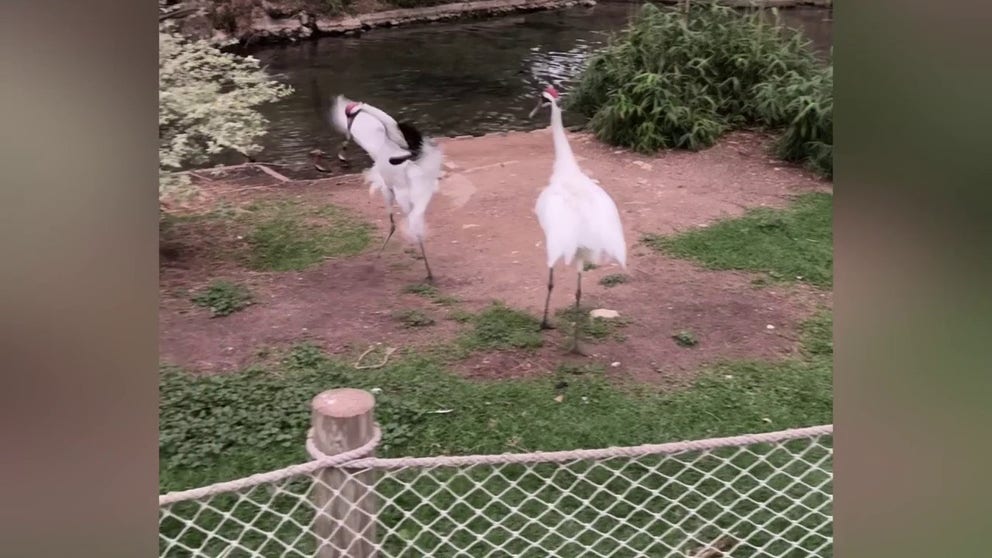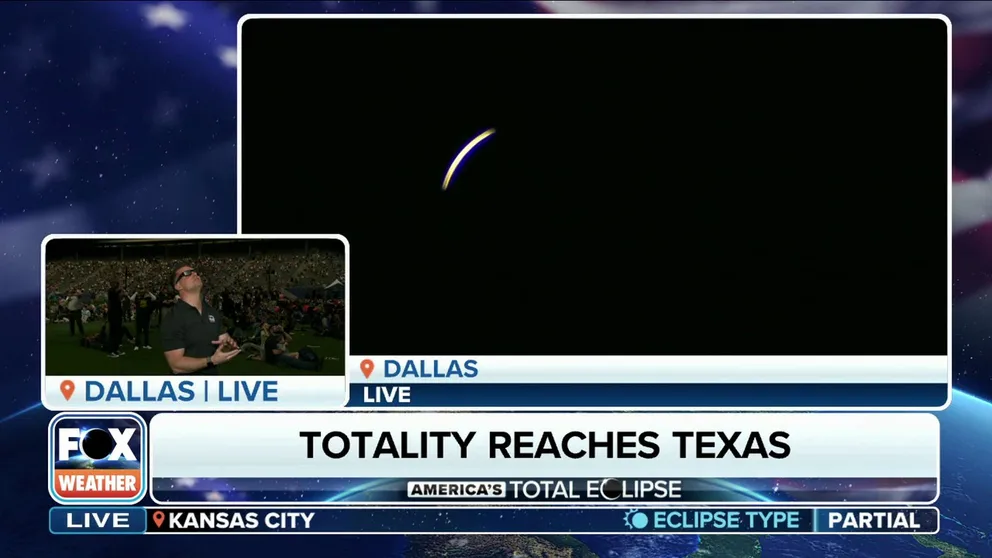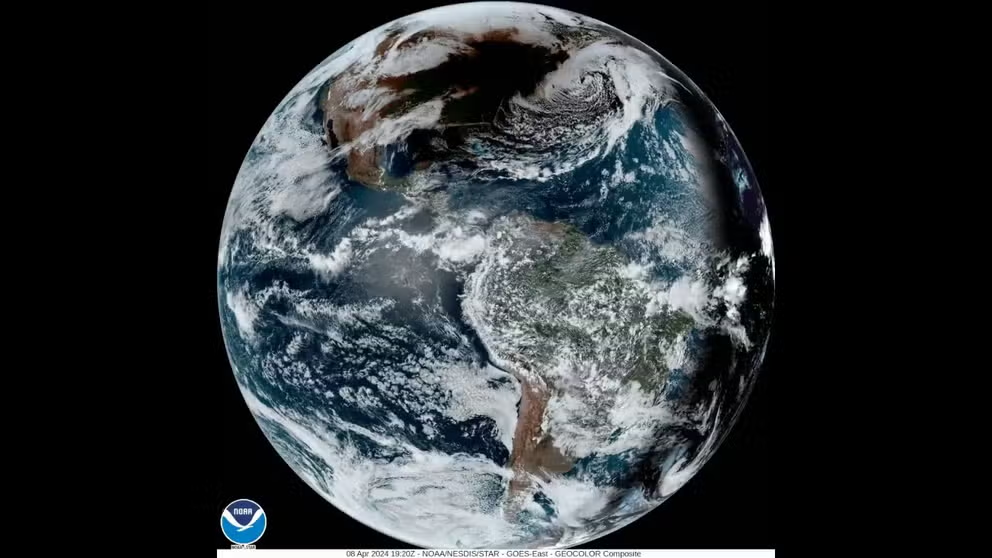Watch: San Antonio Zoo animals react during total solar eclipse as city went dark
Although the zoo said it's possible that some of this animal behavior was coincidental, it still managed to disrupt everyone's typical day.
San Antonio Zoo animals react to total solar eclipse
The San Antonio Zoo in Texas captured footage of their animals during the solar eclipse Monday that caused darkness to fall over the city.
SAN ANTONIO – The San Antonio Zoo in Texas was an unforgettable experience for visitors – and animals – as the city plunged into darkness during a total solar eclipse.
North America witnessed a sudden change in light and temperature on Monday when the Moon covered the Sun. The path of totality was 115 miles wide and covered parts of San Antonio.
Zookeepers observed the animals' behavior closely and reported that many became more active and vocal during the eclipse.
Zoo officials saw their meerkats running erratically throughout their habitat as a single group.
"Meerkats are highly social animals that stick together in groups called mobs, aiding in defense, foraging, and predator protection," the zoo said.
They are active during the day and seek refuge in underground burrows at night, relying on their cooperative nature to ensure security and warmth within their close-knit groups.
SEE IT: AMERICA'S TOTAL SOLAR ECLIPSE WOWS CROWDS FROM BORDER TO BORDER
'This is the most amazing experience': An emotional reaction to solar eclipses' totality
FOX Weather's Stephen Morgan takes us through totality and all the emotions of the phenomenon as darkness descended on Dallas Monday afternoon. Carrie Black of the National Science Foundation joins him. "This was an amazing experience," he said.
The meerkats were also seen approaching and entering their indoor habitat space a few minutes before totality. The zoo said this supported their "working hypothesis that diurnal animals, meaning those awake during the day, would display their typical evening activity patterns during totality."
During totality, observers witnessed whooping cranes inside the zoo dancing. These cranes are known for their complex dancing displays, which are often observed during courtship rituals to strengthen bonds and signal readiness for mating.
"This mesmerizing behavior serves as a form of communication between male and female cranes, enhancing their relationship and social cohesion," the zoo said.
MISS THE APRIL 8TH TOTAL SOLAR ECLIPSE? HERE’S A LIST OF FUTURE CELESTIAL EVENTS
NOAA satellite captures total solar eclipse moving across America
Different views from NOAA's GOES East satellite show the umbra or shadow of the Moon during the eclipse sweeping from the Pacific Ocean to Atlantic Canada. (video credit: NOAA)
Zoo officials also saw flamingos gathering together to form social groups, known as colonies or flocks, where they huddle together for various reasons.
"This clustering gives them a sense of safety in numbers, acting as a defense mechanism against predators by making it harder for threats to single out individual birds," the zoo said.
Although the zoo said it's possible that some of this animal behavior was coincidental, it still managed to disrupt everyone's typical day.
The next total solar eclipse visible from the Continental U.S. won't occur until 2044.


